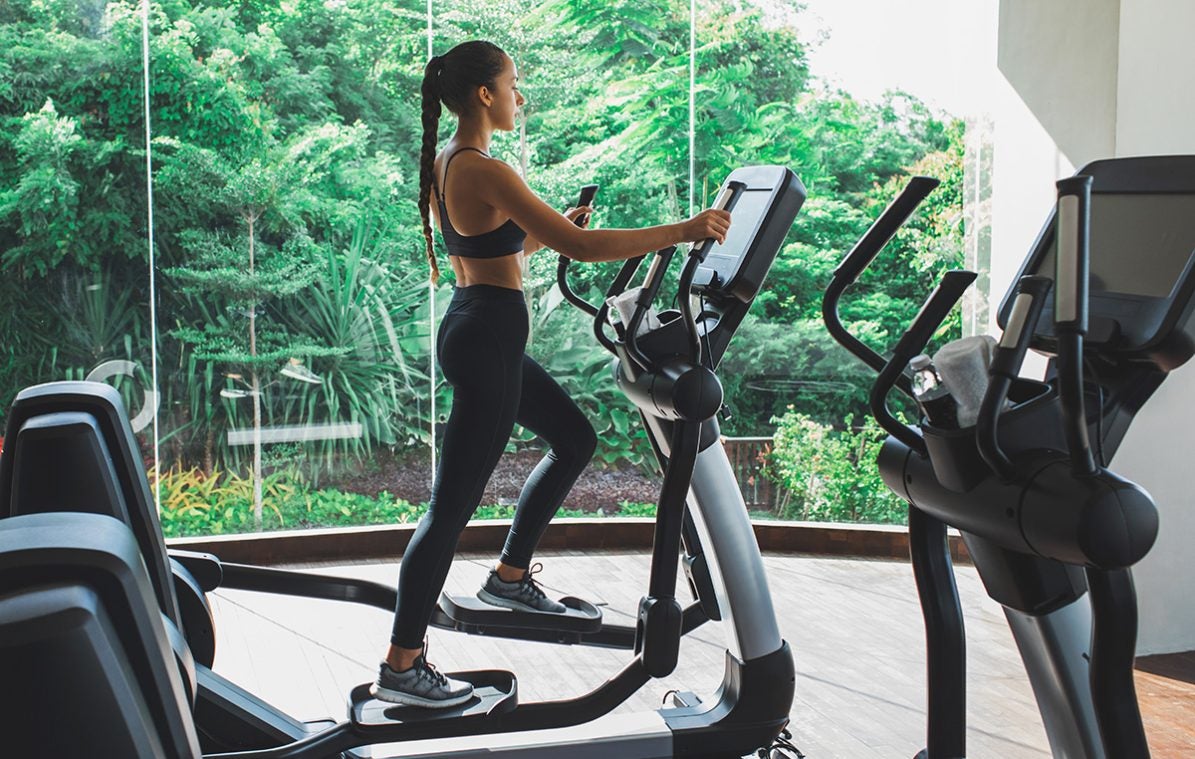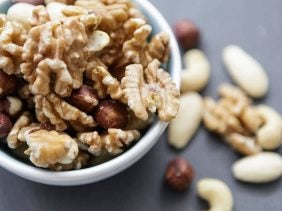Which is More Effective For Weight Loss: Cardio or Weight Training?
 Oleg Breslavtsev
Oleg Breslavtsev
Thirty years of trendy weight loss programs and at-home workout videos tell an unequivocal story: if you want to lose weight, cardio is king. But research has evolved, and with it our understanding of how people can work on changing their body composition. And it turns out neither cardio nor weight lifting will get the job done — it happens when you do both.
The weight loss formula: what the science says
Cardio exercise does a bunch of great things for the body. For instance, it increases the health of the cardiovascular system, helps the body turn cells over faster (called mitochondrial biogenesis) while clearing out the damaged or dysfunctional ones, improves sleep, reduces stress, boosts energy overall, aids your cholesterol profile, and has been associated with improved mental health.
And, of course, it burns calories, and can help reduce body fat. The next obvious question: What kind of cardio is best? It’s a trick question. The best cardio is the one that you’ll do consistently and that you’re excited about (those two things go hand-in-hand).
The number of calories you burn depends on factors like your genetic profile, starting weight, height, and workout intensity. Although the most well-known cardio workouts include running, cycling, walking, and swimming, most endurance training at the gym is done on machines. Treadmills, exercise bikes, elliptical machines, and stairmasters are just some of the options you’ll have there. There are a couple overall forms of cardio work: low to medium intensity endurance training, and high-intensity interval training.
Endurance training: To reach the point when your body begins to lose fat at a faster rate – also known as the “fat-burning” zone – aim to work out for at least 20 minutes with a pulse rate of 110-130 beats per minute. When this happens, your body will begin to get more energy from fat. However, this method doesn’t burn as many calories as the high-intensity method.
High intensity interval training (HIIT): This method can help you burn even more calories. It requires you to engage your body to its breaking point for a short amount of time, followed by relatively longer recovery phases. Alternating between making an effort and taking a break allows your body to continue to burn calories even when you’re not pumping iron. There are a bunch of different ways to do HIIT, including running hill intervals and doing tabata. Working out in this way for just 15 minutes is enough to accelerate your metabolism. The length of each interval will depend on your fitness level.
For people who live in bigger bodies and whose doctors speak to them about other markers of health that are of concern, cardio may be able to help. “Most cardiometabolic risk markers associated with obesity can be improved with exercise training independent of weight loss and by a magnitude similar to that observed with weight-loss programs,” write researchers from Arizona State University and the University of Virginia. And if you up your cardio fitness, you might see those markers of health improve, even if you don’t see the scale move. And here’s the part about consistency. The researchers observe that “weight cycling”—losing and gaining weight, over and over, carries with it a host of health problems, including a greater chance of mortality.
It’s hard to decouple exercise from weight loss, but find ways to focus on the feel-good benefits of cardio workouts which will help you stay motivated even if you are a little discouraged around the scale. And there are dozens of cardio workouts for you to try — which you can check out on the site. And this can also be an opportunity to clean up your diet. It’s basically impossible to take enough indoor cycling classes to outpace a fraternity brother’s diet. It might be time to take a look at the amount of alcohol you’re drinking, how much fiber is in your diet, and whether you’re getting adequate protein.
And what about weight training?
Though strength work may not have a reputation for being as much of a calorie burner as cardio, it’s essential to reaching your body composition goals. Muscle weighs more than fat, but it also burns more calories at rest. So your metabolism at rest rises as your muscle mass does.
How else does that play out in the body? One way we measure overall health, as well as link health measures to body composition, is through insulin resistance, which happens “when cells in your muscles, fat, and liver don’t respond well to insulin and can’t easily take up glucose from your blood.” Insulin resistance is associated with obesity, and when the body can’t process sugar, it stores the excess as fat. A study from Brigham Young University in Utah found that men who report doing no strength training are two-and-a-half times more likely to have insulin resistance versus those who say they strength train often. (The women in the database did not seem to experience the same relationship between strength training being a buffer for insulin resistance.)
In addition to helping with weight management, strength training is important for maintaining strong bones—which is especially crucial for people going through menopause — and can help manage chronic conditions including inflammatory conditions like arthritis, back pain, depression, and heart disease. Oh, and there’s good reason to believe that strength training helps you build self-esteem, too.
The best option: combine both!
Varying your workouts between different forms of cardio and weight training is the best path forward. In a U.S.-New Zealand study published in the New England Journal of Medicine, 141 obese older adults had their weight, bone density, and strength before being sorted into one of four groups: aerobic, resistance, combined aerobic and resistance, or control. Six months later, the biggest improvements were seen in those who’d done both aerobic and resistance training; they had better oxygen consumption, they were up there when it came to strength, lean mass decreased less in them versus the aerobic group, and they also had less erosion of their bone strength.
Long story short: when you do cardio along with strength work, you reap the benefits of both! If you’re doing them on the same day, begin with weights. Lifting requires more precise movements, and getting tired could mean risking an injury. Then get going on a dose of cardio.
And with all of that working out, don’t forget to take time for stretching and recovery—Vinyasa yoga, anyone?—and of course plenty of nutrition.
Want more insights into how your body works? Try our Body Check.
More healthy living tips from foodspring:
Weight Loss Workout Plan: What you need to know
How to lose weight without dieting: 13 tips to your feel-good body
Create your ideal weight loss meal plan and work towards your feel-good body!
Weight Lifting For Weight Loss
Sources for this article
We at foodspring use only high-quality sources, including peer-reviewed studies, to support the facts within our articles. Read our editorial policy to learn more about how we fact-check and keep our content accurate, reliable, and trustworthy.

































